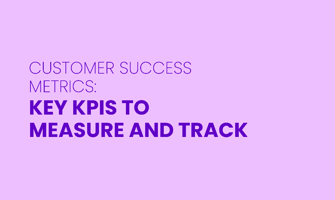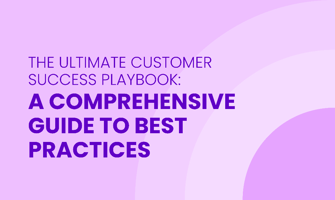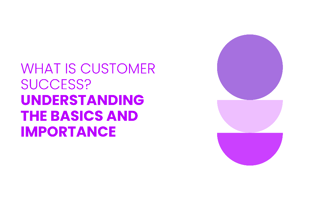Measuring how well a company meets customer needs is important for business growth.
Customer Success Goals: Setting and Achieving Objectives for Growth
Setting clear Customer Success goals helps companies grow. Align these goals with business objectives like revenue growth and customer retention.
Make goals specific, achievable, and time-bound.
Track important metrics like:
Renewal rates
Customer health scores
First contact resolution rates
Use tools like Zendesk and Salesforce to improve communication and monitor customer health. This leads to better customer satisfaction and retention.
Why Setting Clear Objectives Matters
Setting clear objectives helps a business succeed. This aligns customer success goals with company goals like revenue growth, customer retention, and profitability. When teams know their goals, they can measure their efforts better and focus on desired outcomes. These include improved renewal rates, customer lifetime value, and net retention.
Clear objectives boost employee performance and motivation. They provide daily accountability and clear benchmarks for success. For example, a customer success team can focus on reducing the churn rate. They can also work on increasing the customer retention rate, which leads to better customer satisfaction and loyalty.
Tracking metrics like product usage and customer retention cost helps teams measure results. It also allows them to adjust strategies as needed. Effective communication of goals ensures collaboration and support from all team members, including leadership.
A success playbook can help the team streamline onboarding. It can also help interpret customer interactions and provide proactive solutions. With clear objectives, teams can enhance relationships and deliver value through products and services. This leads to growth through better customer experiences and loyalty programs.
Key Metrics for Measuring Customer Success
Customer Satisfaction Score (CSAT)
A company can measure its Customer Satisfaction Score (CSAT) in several ways. These include direct surveys, product usage metrics, and support interactions.
The success team helps with this by using feedback forms and quick survey questions right after a service or product interaction.
To analyze and improve CSAT, the customer success team looks at the metrics regularly. They focus on areas marked low by customers.
Team collaboration is needed to fix these problem areas. This includes working with product teams and leadership to put solutions in place.
Setting clear goals in the success playbook helps improve communication, results, and customer experience.
CSAT helps understand how customers feel about their experiences. It links to customer retention and loyalty.
High scores show that customer success strategies and support programs are working well. Low scores highlight issues that need attention.
Better CSAT leads to higher customer retention rates, renewed subscriptions, and growth in customer lifetime value. This reflects positive outcomes for both customers and the company.
Net Promoter Score (NPS)
Net Promoter Score (NPS) measures customer loyalty. It asks customers how likely they are to recommend a product or service on a scale of 0-10.
To find the NPS, subtract the percentage of detractors (0-6) from promoters (9-10).
For accurate interpretation, segment the data by customer type and interaction points.
--Key benefits of NPS:--
Simple to understand.
Quickly identifies customer loyalty trends.
However, NPS has limits. It doesn't explain why customers give certain scores or capture all aspects of satisfaction.
An organization can use NPS to improve by analyzing feedback from promoters and detractors. This helps identify what needs enhancement.
Implement training and accountability in customer success teams to address concerns promptly.
Set clear goals for improving NPS and track them using metrics like customer retention rate and renewal rate.
Effective communication and collaboration between leadership, stakeholders, and the success team ensure shared responsibility.
By using NPS insights in the customer success strategy, companies can enhance customer experience, loyalty, and revenue growth.
Customer Effort Score (CES)
Customer Effort Score (CES) measures how much effort a customer puts in to resolve an issue with a product or service.
If a customer has to contact multiple teams or navigate confusing steps, their effort level is high. This can lead to poor retention and loyalty.
When a customer finds the process straightforward and easy, they are more likely to keep using the product and recommend it to others.
This metric helps the customer success team set goals to improve client interactions. They aim for seamless communication, efficient service, and teamwork among teams.
Successful strategies include:
Enhancing onboarding programs
Providing excellent training
Using a success playbook to address customer needs
By focusing on lowering the effort required, companies can:
Improve satisfaction
Increase customer loyalty
Boost metrics like retention rate, renewal rate, and customer lifetime value
Daily accountability from the success team and strong leadership ensure all stakeholders work towards better customer experiences. This leads to higher net retention and growth for the company.
Churn Rate
Measuring churn rate involves tracking customer retention rate, renewal rate, and net retention. The success team monitors these metrics, looks at trends, and reports to leadership. Daily accountability and clear goals are important.
Common reasons for high churn include poor customer service, lack of value, and inadequate onboarding. A good strategy covers these areas with communication, onboarding programs, and continuous training. Collaboration among customer success, product, and service teams helps find solutions.
High churn hurts long-term growth by reducing revenue and customer lifetime value. Customer retention promotes loyalty and satisfaction. Regular interaction, success playbooks, and feedback loops help clients see ongoing value in products and services.
Strong partnerships with stakeholders and proactive support improve customer experiences and loyalty. This drives positive results. Building long-term relationships and accountability helps create a loyal customer base, leading to business success. A customer success strategy focused on retention is important for growth and sustainability.
Align Customer Success Goals with Business Objectives
To align customer success goals with business objectives, companies should set specific, time-bound goals. These should focus on revenue, customer retention, and profitability.
For example:
Increasing customer retention directly supports revenue growth by reducing churn.
Strategies to consider:
Proactive onboarding and training tailored to the client's needs.
Daily accountability and team collaboration.
Teams should measure outcomes like net retention rates and customer lifetime value. This ensures alignment with business goals. Key indicators to track progress include churn rate, renewal rate, and product usage.
Effective communication, leadership, and support from all stakeholders drive customer satisfaction and loyalty. A success playbook can outline daily activities and metrics. This helps improve customer experience and ensures that services and products deliver value.
By focusing on customer interactions and building strong relationships, the success team can achieve positive results. This shows how well customer success initiatives support broader business objectives.
Developing a Proactive Strategy for Customer Success
To spot customer issues early, businesses can create a customer journey map. This map should highlight key interaction points and anticipate customer needs. It should include steps for onboarding, support, and daily accountability.
The success team should collect and analyze key metrics like:
Product usage
Renewal rates
Customer retention rates
These metrics help measure satisfaction and find areas for improvement. Working with stakeholders helps align goals with broader company objectives. This improves communication and addresses potential gaps.
To prevent churn, teams should:
Offer training sessions
Host webinars
Provide resource materials
These activities help customers understand the product better. Regular check-ins and surveys offer insights into customer experiences. This information helps the team adjust strategies and improve service quality. It's important to track net retention, churn rates, and customer lifetime value. These metrics show how well strategies are working and if any changes are needed.
Building strong customer relationships is important for loyalty. A Customer Success playbook can help. It should include clear goals and responsibilities to foster team collaboration. Good communication and accountability improve the customer experience and increase loyalty. A proactive strategy helps keep clients happy, boosts retention, and drives revenue. Satisfied customers often become brand advocates.
Role of Customer Success Manager in Achieving Goals
A Customer Success Manager (CSM) helps align customer goals with company objectives. They set specific and achievable goals that match business targets like revenue growth and customer retention.
CSMs use important metrics to measure customer success. These include:
Net retention rate
Customer retention rate
Renewal rate
These metrics help track product usage and customer lifetime value. This ensures both the customer and the business meet their goals.
To keep progress steady, a CSM uses proactive strategies. These include:
Onboarding programs
Tailored training sessions
Daily accountability checks
They also use a success playbook to guide the team through action plans. This ensures responsibilities are clear and service gaps are addressed.
Open communication between the success team and other stakeholders is important. It fosters collaboration and improves customer interaction and satisfaction. This results in better customer loyalty and lower churn rates.
Consistent support and monitoring of customer well-being increase retention and growth. This ultimately brings value and measurable outcomes for the business.
Impact of Customer Success on Renewal Rates
Effective customer success management helps improve customer renewal rates. It ensures customers reach their goals.
A dedicated success team works closely with clients. They guide them through product usage. They offer support and proactive solutions.
Customer feedback is very helpful. It helps the team improve their strategies and services. This leads to better interactions and higher satisfaction.
Clear communication and meeting goals make customers feel valued. They are more likely to renew their subscriptions.
Tracking metrics like customer retention rate, net retention, and churn rate shows how well the program is working.
A well-planned success playbook aligns the team's daily work with business goals. Through targeted onboarding, personalized training, and consistent support, the team builds strong relationships. This increases loyalty.
Collaboration between leadership and stakeholders improves customer experiences. This drives growth and boosts net retention rates.
Engaging customers with tailored services and regular interactions shows them high value. This results in better retention and renewal rates.
Leveraging Technology: Tools Like Zight
Tools like Zight can make customer success tasks easier. It provides one platform for teams to track goals, measure success, and manage customer interactions.
Zight enhances communication and tracks customer interactions. This helps success teams offer top-notch service and improve customer retention.
Using data, Zight lets teams monitor important metrics like net retention, renewal rates, and customer lifetime value. These tools support accurate reporting and effective decision-making.
Zight offers insights into customer experience, product usage, and onboarding processes. Team collaboration becomes easy. Daily accountability and clear communication lead to better customer outcomes.
Success playbooks and training programs can be handled simply with Zight, increasing client satisfaction and loyalty. Stakeholders and leadership can view real-time data. This ensures strategies are aligned and measurable results are achieved.
Zight tracks customer health scores, churn rate, and customer retention cost. All these factors help grow revenue and build strong customer relationships.
Best Practices for Maximizing Customer Outcomes
To maximize customer outcomes, companies should have a good feedback process. Here are some steps:
Regularly gather and act on feedback.
Use tools like surveys, direct communication, and post-interaction reviews to measure customer satisfaction and product usage.
Ensure collaboration between the customer success team, product teams, and support services.
This helps align customer goals with service delivery, improves customer loyalty, and reduces churn rate.
Personalized customer engagement is important. Tailor interactions and solutions to fit each client’s needs. This could include onboarding programs, daily support, and training. Such personal touches boost customer satisfaction, increase renewal rates, and drive customer success.
Track metrics like:
Customer retention rate
Net retention
Customer lifetime value
These metrics help measure results and improve strategies. Using a success playbook can outline daily tasks, goals, and wins for the team, driving better customer outcomes.
Strong leadership and stakeholder involvement help align customer success goals with company objectives like revenue growth and customer retention. Clear communication and good relationship-building lead to better service, results, and customer loyalty.
How to Measure Success and Hit Goals
To measure success in customer goals, teams should track key KPIs. These include:
Customer retention rate
Churn rate
Renewal rate
Net retention
Customer satisfaction
Customer lifetime value
Product usage
Teams should regularly review progress towards goals. Daily accountability and monthly assessments work best. This helps adjust strategies based on current metrics.
Customer success platforms help manage relationships, collect data, and support needs. A customer success playbook ensures teams follow best practices. These include onboarding, training, and communication.
Collaboration between leadership, stakeholders, and success teams helps adapt programs. Effective communication builds customer loyalty and boosts retention. Regular training and support improve the customer experience.
By focusing on these areas, companies can:
Improve customer experiences
Reduce retention costs
Drive revenue growth
Examples of Successful Customer Success Strategies
Salesforce's Customer Success Model
![]()
Salesforce's Customer Success Model is different from traditional support. It focuses on proactive measures instead of reactive support.
Customer success teams talk to customers to understand their goals. They then tailor services to enhance product use and value. These teams set clear goals tied to revenue, growth, and customer retention.
The main components include:
Setting specific success metrics like net retention rate, churn rate, and customer lifetime value.
A success playbook guiding daily tasks, training, and interactions.
Salesforce tracks customer outcomes by looking at:
Customer retention rate
Renewal rate
Product usage
The strategy includes:
Onboarding programs
Ongoing education
Targeted communication to support clients
Through collaboration and leadership, the teams build long-term relationships. This helps customers find value and reach their goals.
This model boosts customer loyalty, satisfaction, and subscription renewals. By focusing on customer success and retention, Salesforce enhances customer relationships and experiences. This ultimately contributes to business growth.
Setting and Achieving Clear Customer Success Objectives
Setting clear customer success objectives means defining specific and attainable goals. These goals should align with overall business aims.
Here are some steps to do this:
Work with customer success teams and leadership to link goals to revenue, customer retention, and satisfaction.
Keep daily accountability and clear communication to track progress.
Make objectives measurable with metrics like customer lifetime value, renewal rate, and net retention.
Tools to help include:
A customer success playbook
Regular training programs for the success team
Measure outcomes by looking at:
Product usage
Customer retention rate
Churn rate
Effective onboarding and proactive customer interaction also help build strong relationships and loyalty. Tracking customer retention cost, and aligning it with the success team's efforts, drives growth.
Clear objectives, teamwork, and communication ensure customers find value and achieve positive results with the product or service.
Maximizing Customer Experience Through Service Excellence
A company can find problem areas in the customer journey. They can do this by tracking metrics like customer satisfaction, churn rate, and renewal rate. Watching these metrics helps the team see where customers have issues with products or services.
To improve service, teams can create a success playbook. This playbook should outline solutions and provide daily tasks. Training employees is important for a great customer experience. It helps the team develop skills to offer the best support and build strong customer ties. Training should focus on product knowledge, communication, and problem-solving.
Gathering customer feedback helps refine services. Regularly collect and analyze feedback. This helps the team make decisions based on data, enhance services, and address client concerns. Continuous improvement builds customer loyalty and boosts retention rates.
Getting leadership and stakeholders on board is important. This ensures goals match the wider business objectives. Better communication and teamwork lead to understanding customer needs. This ultimately increases customer value and net retention.
FAQ
What are some common customer success goals for businesses?
Some common customer success goals for businesses include increasing customer satisfaction, reducing churn rate, driving upsells and cross-sells, and improving customer retention.
How can businesses align customer success goals with overall growth objectives?
Businesses can align customer success goals with overall growth objectives by strategically incorporating customer feedback into product development, providing personalized support, and implementing loyalty programs.
For example, tracking key metrics like customer satisfaction scores and retention rates can help measure progress towards growth objectives.
What strategies can be used to measure and track customer success goals?
Some strategies to measure and track customer success goals include utilizing key performance indicators (KPIs), conducting customer surveys, tracking customer retention rates, and monitoring customer feedback through social media engagement.
How can businesses overcome challenges in setting and achieving customer success objectives?
Businesses can overcome challenges in setting and achieving customer success objectives by aligning goals with customer needs, utilizing customer feedback, implementing strong communication strategies, and regularly tracking progress. For example, conducting regular surveys and holding customer success training sessions can help improve outcomes.
What role does customer feedback play in setting and achieving customer success goals?
Customer feedback plays a crucial role in setting and achieving customer success goals by providing insights into areas of improvement. For example, feedback on product features can help prioritize future development to better meet customer needs and enhance overall satisfaction.




